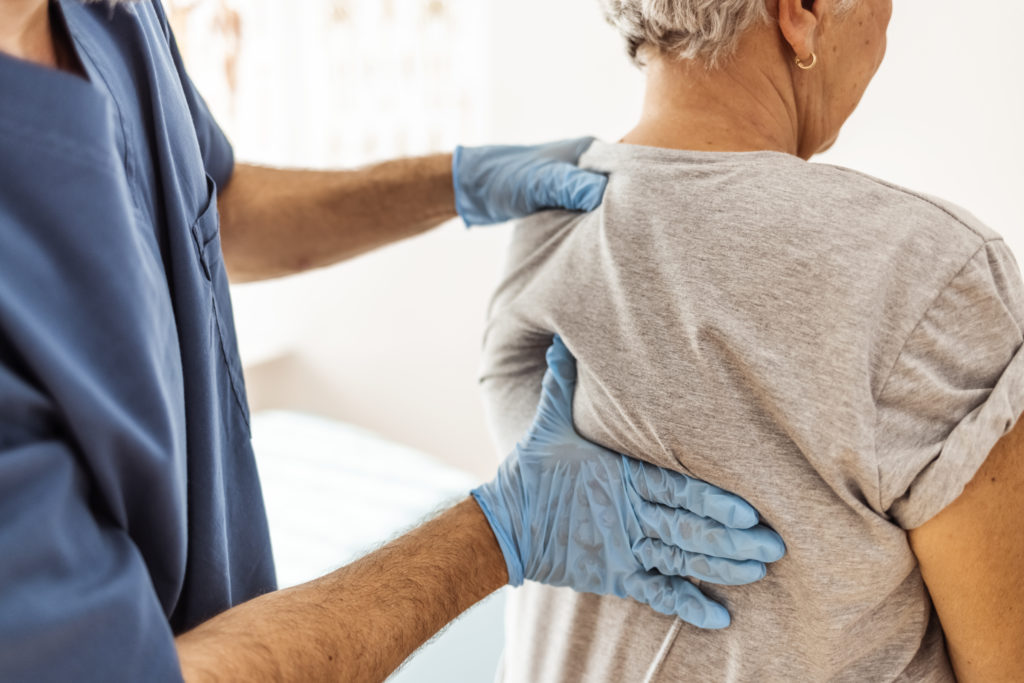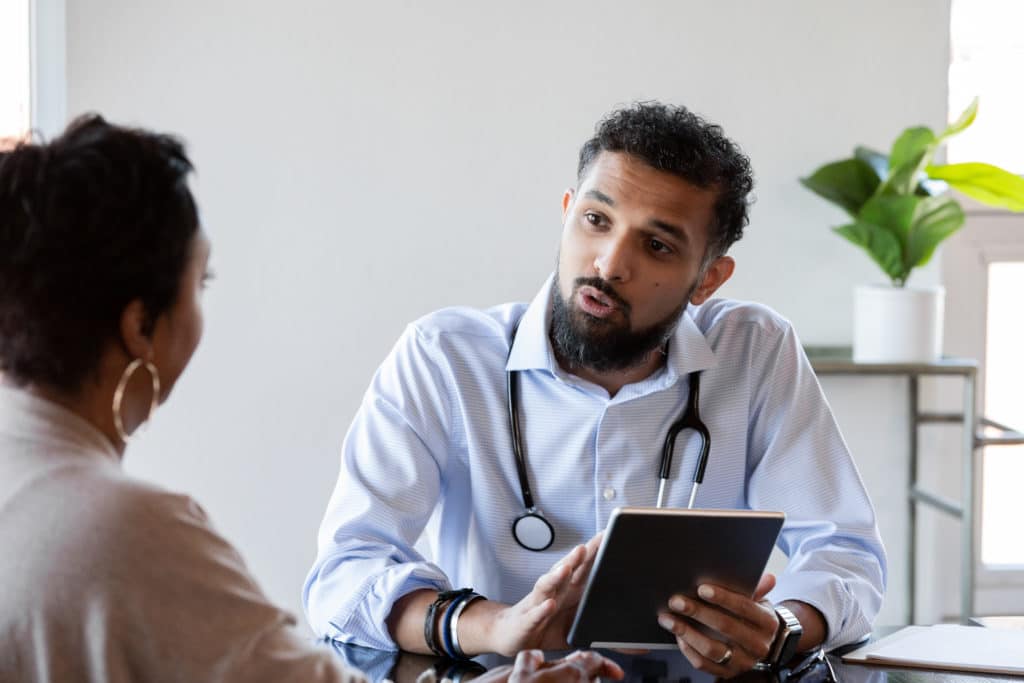

Diagnosis of Spinal Stenosis
Diagnosis of Spinal Stenosis
With the right treatment, pain caused by spinal or cervical stenosis can be managed. Learn more here.
Table of Contents
What Is Spinal Stenosis?
Spinal stenosis typically develops gradually over time and is commonly caused by osteoarthritis-related wear and tear changes in the spine.
Impact of Spinal Stenosis
Some people with spinal or cervical stenosis may not show any symptoms for a long time. However, depending on the severity and where the condition is, people may experience numbing, tingling, and muscle weakness, which can worsen over time.
The prevalence of cervical stenosis is 6.8% in patients fifty years old and over and 9% in patients seventy years old and over.3
Where Does Spinal Stenosis Occur?
What Are the Symptoms of Spinal Stenosis?
Sometimes symptoms of spinal stenosis do not appear when the condition first develops, as the narrowing of the spine is typically a slow and progressive process.
Symptoms of spinal stenosis may vary from person to person, but the most common include:
- Leg or arm weakness
- Lower back pain while standing up or walking
- Numbness in the legs
- Balance problems
What Causes Spinal Stenosis?
Several factors may contribute to the development of spinal stenosis. The underlying common factor among the different causes is alterations to the structure of the spine, causing a smaller space around the spinal cord and nerve roots that exit through the spine.
This small space will cause compression or pinching of the spinal cord or nerve roots, resulting in low back pain and sciatica symptoms.
Some of the causes of spinal stenosis will be detailed below.
Bone Overgrowth/Arthritic Spurs
Bulging Discs/Herniated Discs
Thickened Ligaments
Spinal Fractures and Injuries
Spinal Cord Cysts or Tumors
Congenital Spinal Cord Stenosis
Spinal Stenosis Diagnosis and Tests
Spinal stenosis is often diagnosed via:
Medical History Review
X-Ray
Magnetic Resonance Imaging (MRI)
Computerized Tomography (CT scan)
A computerized tomography (CT) scan combines x-ray images taken from various angles to create detailed cross-sectional images of the body.
Medical professionals perform CT scans after injecting a contrast dye into the veins to see the spinal cord and nerves more clearly.

Spinal Stenosis Treatments
Treatment options usually depend on the severity of the symptoms and where the condition is located on the spine. For example, mild symptoms may only require self-care home remedies.
However, if at-home treatments are not sufficient and pain persists or worsens, a doctor would likely recommend the following medications:
Medications
Medications used in treating spinal stenosis include:
- Antidepressants, such as amitriptyline, clomipramine (Anafranil), desipramine (Norpramin), doxepin imipramine (Tofranil), or nortriptyline (Pamelor)
- Opioids, such as oxycodone (Oxycontin) or hydrocodone (Vicodin)
- Muscle relaxants, such as cyclobenzaprine (Amrix Fexmid)
- Anti-seizure medication
- Corticosteroid injections
- Anesthetics
Surgery
Surgery for spinal stenosis can only be performed when other treatment options have failed.
Types of surgery for spinal stenosis include:
- Laminectomy: Laminectomy is the most common type of surgery for spinal stenosis. It removes the lamina, creating more room for the spinal cord and nerves.
- Laminoplasty: Laminoplasty is performed only in the cervical (neck) area, and it involves the removal of the lamina to create more canal space.
- Laminotomy: Laminotomy is a procedure that removes only a small part of the lamina that is causing the most pressure on the neck.
- Minimally Invasive Surgery: Minimally invasive surgery, also known as interspinous process spacers, is conducted on people with lumbar spinal stenosis. It involves inserting spaces between the bones extending off each vertebrae’s back, called the spinous process.
- Decompression Procedures: A decompression procedure is mainly used for treating lumbar spinal stenosis caused by a thickening of the ligamentum flavum in the back of the spinal column. One study found that patients who received surgical decompression procedures reported significant pain reduction compared to those who received nonsurgical procedures.4
Assisted Devices
Get Help for Spinal Stenosis at J. Flowers Health Institute
The severe or chronic pain caused by spinal or cervical stenosis can affect your quality of life. At J. Flowers Health Institute, we provide effective treatment options that work best for you.
Our impressive facility provides comprehensive care that begins with a diagnosis, moves on to treatment, then continues with recovery care.
Contact us today and start your journey toward a healthy and enjoyable life.









